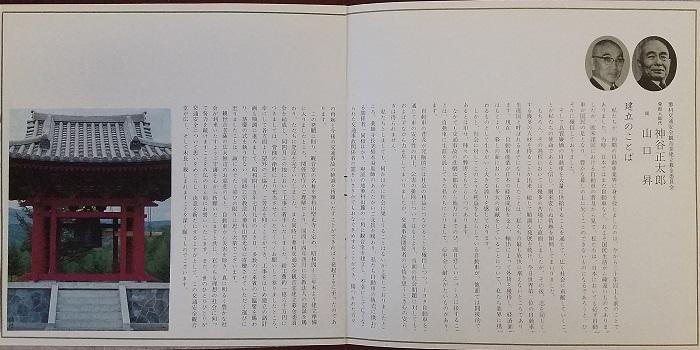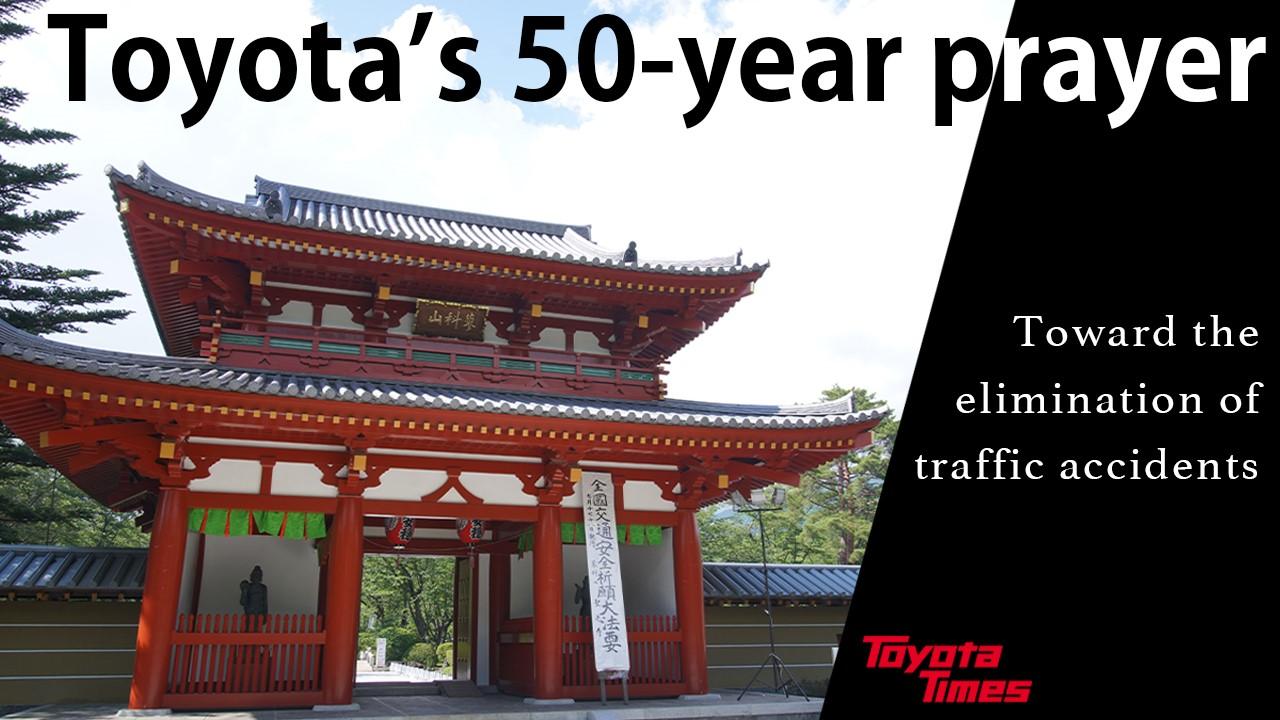
Shoko-ji Temple in Japan is a place where carmakers, suppliers, and other traffic-related groups gather annually to pray for traffic safety and victims. Akio Toyoda shares thoughts about why this is a tradition that he hopes to preserve.

Each year, Japan holds nationwide campaigns to promote traffic safety. This year’s was held from September 21 - 30. Part of the reason for this timing is that every year, the last day of the month, September 30th, is set apart as a day where the country hopes to pass the day with zero traffic fatalities. It is a lofty goal, and this year, the number of traffic fatalities in Japan were 87, which was fortunately down by 2 compared to the previous year, becoming the lowest since 1954 (when the statistics started).
It is not widely known that there is also one specific day or occasion at Toyota when people pray for the elimination of traffic fatalities. Approximately two months prior to the national campaign, Akio paid a visit to a temple in Nagano prefecture.
The temple visited by Toyota’s top executives every year
Within Chino City, Nagano Prefecture, located near Mt. Tateshina on the shores of Lake Tateshina, an area famous for its cherry blossoms, is Shoko-ji Temple. The lush area has about 300 Yoshino cherry trees; but, because they are located on a plateau at an altitude of 1200 meters, the trees don't fully bloom until late April to early May. During that time, many tourists visit as the area is regarded and well known as the last place to enjoy the blossoms on honshu (the main island of Japan).
Shoko-ji Temple was built as a site to pray for the safety of all drivers. However, not many people are aware that Toyota was involved in the construction of the temple and that Toyota's top executives, dealerships and representatives from around the country visit here every July during the Summer Festival.
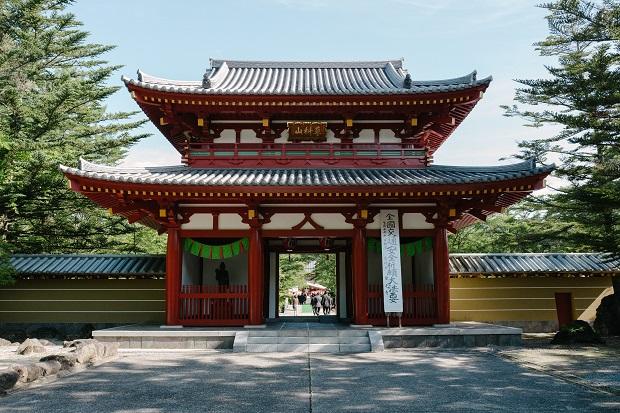
Recognizing traffic accidents as a social issue
In 1970, when the Shoko-ji Temple was built, Japan was hosting Expo’70 (Japan World Exposition 1970, Osaka Banpaku). The Expo drew the participation of 77 countries under the theme of "Progress and Harmony for Mankind" while Japan was in the midst of high economic growth. Motorization was also progressing rapidly, with car ownership increasing at a scale of around 2 million per year*.
On the other hand, the number of traffic accidents had also seen an increase, creating a serious social problem. For reference, the number of traffic fatalities in 1959 exceeded 10,000, and that number continued to increase, reaching 16,765 by 1970*. In Japan, the increased incidents of fatal traffic accidents was a crisis known as the “Traffic War”.
The intentions of those who dedicated their lives to cars
Cars were made to help people, but instead, they have also taken many lives and have become the cause of grief and sorrow… This situation was surely devastating for car manufacturers and dealerships.
In 1970, Toyota was divided into Toyota Motor Co., Ltd. and Toyota Motor Sales Co., Ltd., with each in charge of automobile production and sales, respectively. The vision for building the temple came from Shotaro Kamiya, who was the president of Toyota Motor Sales Co., Ltd., in the hopes of comforting the spirits of traffic accident victims, the speedy recovery of those injured and the eradication of all traffic accidents. After reaching out to Toyota dealerships nationwide, many like-minded companies responded with sizable donations, prompting the construction of Shoko-ji Temple.
A booklet that was distributed to attendees at the dedication ceremony of the temple on July 9, 1970 included the “Words of Construction” written by the promoters' representatives, Shotaro Kamiya and Noboru Yamaguchi (Aichi Toyota Motor Co., Ltd.), who was the chairman of the Toyota Dealers Association at the time. Below is an excerpt from that booklet:
Today, as people of the automobile industry, we’re enormously proud to be supporting Japan's economic growth, earning foreign currency through exports, and making a great contribution not only to the economy, but also to everyday life.
However, while automobiles bring such benefits to society, they also inadvertently cause harm.
Above all, the tragedy of traffic accidents extending from cities to rural areas and the daily sad news are unbearable for us, the people who have dedicated our lives to cars.
Is Toyota relying on God for road safety?
Even though the Shoko-ji Temple embodied the earnest feelings of those engaged in the business of automobiles, according to Second Generation Chief Priest Shuin Matsukubo, when the temple was first built, Toyota was sometimes criticized for "relying on praying to eliminate traffic accidents."
Nevertheless, Toyota representatives, including dealerships and group companies from around Japan, have continued to visit the temple and pray every year. At the Summer Festival on July 18, 2017, the chief priest at the temple reminisced while he shared the following story:
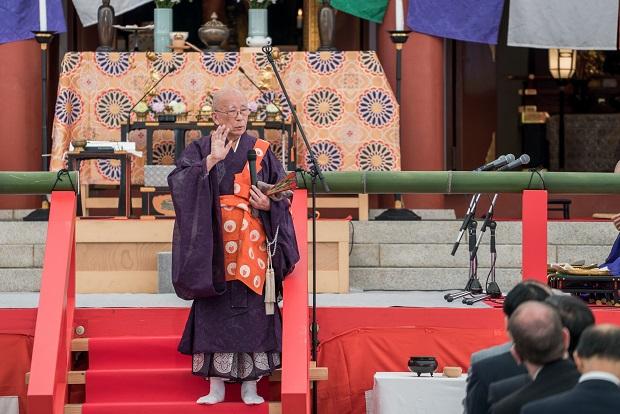
Toyota built Shoko-ji Temple with the aspiration, “No one should be killed in car accidents as long as we are in the business of building cars.”
Ever since the merging of Toyota Motor Co., Ltd. and Toyota Motor Sales Co., Ltd., and even up until this day, Honorary Chairman Shoichiro Toyoda continues to visit the temple and pray for road safety.
When I came here, the temple was erected in an open field without even a gate in the precincts. I believed that it was my duty to take good care of the temple, but thanks to Toyota, in 3 years it’ll be 50 years old.
Today, we can still pray for road safety because Toyota Motor Sales Co., Ltd. initiated building this temple together with dealerships nationwide, and all the while the Honorary Chairman continues to carry out their wishes.
Honorary Chairman Shoichiro Toyoda has visited Tateshina and prayed for over 30 years since 1982 when Toyota Motor Co., Ltd. and Toyota Motor Sales Co., Ltd. merged. From 1981 to 2012, he supported the activities of the Shoko-ji Temple as its responsible executive.
Akio wanted to share a special message at the 50th Anniversary event
On July 18 of this year, during the COVID-19 pandemic, the 50th Anniversary Summer Festival was quietly held at Shoko-ji Temple. Visiting and praying at the temple for traffic safety has become a regular summer event that Akio has not missed since becoming president. Akio, now the responsible executive of Shoko-ji Temple, made the following statement on safety while there:
The other day, I had the opportunity to test drive a car equipped with the latest automated driving technology. The technological progress was remarkable compared to my first ride. However, in reality, unpredictable things that we didn’t necessarily prepare for will happen. Even the new technologies that we develop in the hopes of promoting safety could lead to tragic accidents depending on how they are used.
After the test drive, I thought of when Toyota had just been established. The first trucks that Kiichiro Toyoda and his colleagues sold were, unfortunately, vehicles that quickly broke down. Because of the number of failures, the customers became angry and I heard that the engineers, including Kiichiro himself, handled each case in a speedy manner.
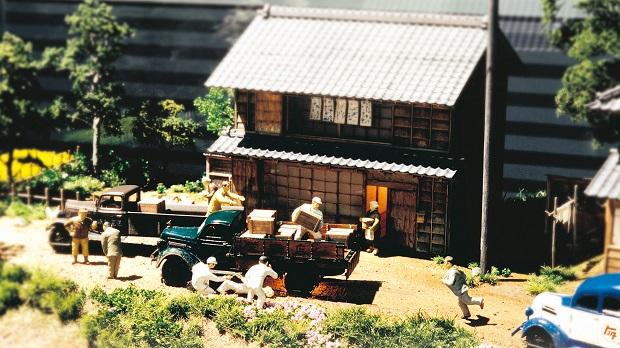
There are people who, unfortunately, lose their lives because of cars. There are people who are devastated because of cars. This hasn’t changed since the company’s establishment. We must make cars and bring new technologies to the world without looking away from this reality.
For the past 50 years, we have continuously visited Shoko-ji Temple every year to pray for the eradication of all car related tragedies. I heard that many said, “Just praying isn’t enough” when the temple was first built.
Regardless, we have continuously kept praying, as we must continue to deliver ever-better cars and technologies made with our greatest passion to the world. I strongly believe this.
Now, a technological revolution called “CASE” is about to immensely change the core concept of cars. Nevertheless, some things will never change; it is our mission to create people’s happiness.
We shall continue praying to eliminate all of the tragic accidents from the world and pursue cars that make people even happier.
Passing down aspirations regarding safety
At a different occasion, Akio made the following comment when asked about his thoughts about praying at Shoko-ji Temple every year.
I didn’t want to be the one out of all the presidents to stop this tradition. Although I've changed many things, I, Akio Toyoda, must not change this tradition during my tenure.
In the context of the once-in-a-century period of profound transformation that is now facing the automobile industry, there is a phrase which Akio has repeatedly used. It is this:
“The word ‘decide’ in Japanese is written using the Chinese characters for ‘deciding to end something’. Anyone can decide to do something. But it is the responsibility of the people at the top to decide to stop something.”
However, Akio has clearly stated that this is one routine that “should not be stopped.” He keeps visiting Shoko-ji temple because, of all people, he best understands the weight of this half-a-century long prayer to “eliminate car accidents from the world.”
The merging of Toyota Motor Co., Ltd. and Toyota Motor Sales Co., Ltd. in 1982 helped spread the tradition of praying for road safety started by Toyota Motor Co., Ltd and dealerships nationwide to group companies and other related companies, now extended to even include the Kyohokai (parts and suppliers) and Eihokai (facilities and logistics).
Beyond that, the movement is now diversifying as the core concepts of cars are being transformed by CASE. Dr. Gill Pratt (CEO of Toyota Research Institute, Inc., or TRI) and Dr. James Kuffner (CEO of Toyota Research Institute Advanced Development, Inc. or TRI-AD) are a part of the next round of executives who are playing an important role in advanced R&D at Toyota.
In fact, TRI, where both Dr. Pratt and Dr. Kuffner served as the top leader and Chief Technology Officer respectively, held its first board meeting in 2016 at Tateshina, the area where Shoko-ji Temple is located, and both of them joined in praying for traffic safety during the Summer Festival. The dream to achieve “zero traffic accident victims” has been inherited as one of Toyota’s unwavering principles as it progresses in the development of automated driving technology.
In addition to the Summer Festival, a new meeting dubbed as the “Tateshina Meeting” was launched last year to coincide with the Summer Festival. Safety technology can only contribute to society if it is widespread. Therefore, partnerships in this area, rather than just competition, have become necessary. Recently, carmakers such as Suzuki, Subaru and Mazda along with top product suppliers, including Bridgestone and Sumitomo Rubber Industries, have joined the gathering in Tateshina with the intention of sharing the same principles. Thus discussions that focus on realizing a safe mobile society are becoming ubiquitous throughout the automotive industry.
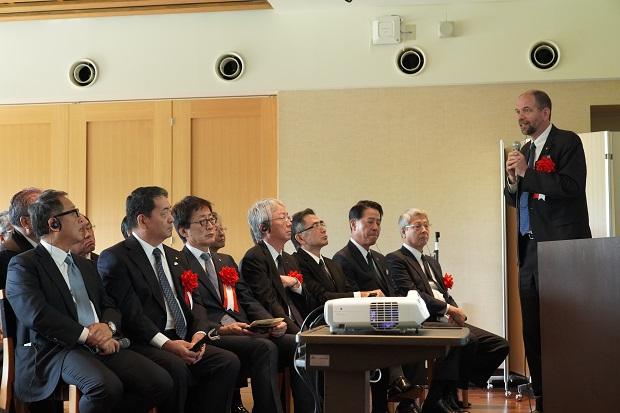
3,215 people ― this is the number of fatalities caused by traffic accidents in Japan in 2019. In the past 50 years, traffic safety has become a national concern that both the public and private sectors have worked on together. As road maintenance and safety education advances, automotive technologies have improved dramatically. Due to such collaborative efforts, the number of fatalities has decreased from their peak in 1970, when Shoko-ji Temple was established, to roughly one-fifth* of that amount now. Unfortunately, the issue of people losing their lives due to traffic accidents remains.
Toyota continues to work diligently on a daily basis in its R&D divisions and with its partners and other like-minded groups across the globe to help prevent traffic accidents with the dream that cars do not cause sadness, but rather are instruments to help make people happy. To keep that mindset, one that aspires to a world with zero traffic accidents, Toyota and other like-minded companies and people will continue to visit Shoko-ji Temple, and continue to pray.


